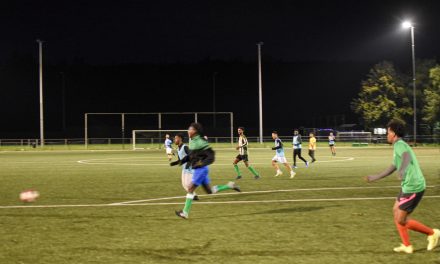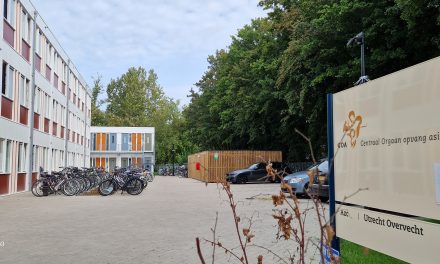Almost six months ago, hundreds of thousands of people took to the streets across Europe to support the Black Lives Matter movement. Following these events, the European Commission published the EU Action Plan against Racism 2020-2025 in September, recognising for the first time the existence of structural, institutional racism. But if acknowledgement is not translated into action, the burden will remain on the shoulders of victims, Juliana Santos Wahlgren, Senior Advocacy Officer of the European Network against Racism, is concerned.
This is not the first time the European Union has taken such action against racism. The Commission first published an action plan in 1998, closely followed by the Racial Equality Directive in 2000, which inter alia prohibits discrimination on the grounds of racial or ethnic origin in employment, the Framework Decision on combating racism and xenophobia by means of criminal law in 2008 and the Victims’ Rights Directive in 2012. “What is pivotal in this plan, which is really a milestone,” according to Juliana Wahlgren, “is that for the first time the European Commission recognises structural, institutional racism. Before, in all those other frames, in all those other directives, discrimination remained at the level of the individual.”
The new Action Plan not only provides for the evaluation of the existing legal framework to fill possible gaps and improve implementation, but also aims to integrate racial equality into all future EU policies, such as the forthcoming proposal for a legal framework on Artificial Intelligence – which Wahlgren warmly welcomes: “They need to provide solutions and research and a better understanding of how technology is not neutral.” For example, studies have shown that face recognition software has difficulty identifying women and black people.
Good intentions alone are not enough
Nevertheless, the human rights expert is concerned that good intentions alone are not enough: “For the moment it is a plan with a lot of principles and guidelines, but the measures need to be defined. Even if there is acknowledgement of structural, institutional racism, there is a fear that the actions will still be at the level of the individual. It is more about the level of recognition and asking the individual to report when it’s faced structural racism, but we know that the problem is not only the reporting, the problem is also the accountability.”
For Wahlgren, multi-level governance with a “consistent and holistic approach” is key: “You need the EU to ensure that there is a harmonization of standards and that there is also a protection of fundamental rights, but the efforts of the EU level are empty if the Member States don’t do their work and if the local level cannot protect victims.” The Commission encourages Member States to develop their own National Action Plan, which the European Network against Racism has long advocated, but which has so far been adopted by very few countries.
Common guiding principles as a basis for all Member States
The Commission will put forward common guiding principles as a basis for all Member States by the end of 2021. Wahlgren hopes those will include “the same sophisticated understanding of racism, that racism has different dimensions – exactly like it is written in the plan,” as well as an intersectional approach. “The discrimination that is faced by a Muslim woman on the labour market is not the same discrimination that is faced by a Migrant woman on the labour market.” Here the question of funding will play a crucial role in the effectiveness of the plan. “We know very well that the problem remains at the level of implementation. How are we going to make sure that Member States will follow the guidelines of the commission if there is no money allocated?”, asks Wahlgren, pointing out that the EU Action Plan does not mention any specific financial measure.
Furthermore, according to the Senior Advocacy Officer the member states need to start collecting data disaggregated by ethnic or racial origin to “bring more visibility to the question of racism and discrimination and therefore to find specific measures that are tailor-made and appropriate for the problem,” as included in the Action Plan. Even though NGOs have long been campaigning for this, such data is only available in the United Kingdom, one reason being the horrors of Nazi Germany. A survey conducted by the European Union Agency for Fundamental Rights in 2017 indicates that 45% of respondents with North African background, 41% of Roma respondents and 39% of respondents with Sub-Saharan African background have already felt discriminated, especially in access to work.
EU institutions themselves lack diversity
For the future, the Commission plans to strengthen its dialogue with those affected by racism through appointing an anti-racism coordinator as well as holding a meeting with civil society actors on the ground at least twice a year, which may not be enough in Wahlgren’s view. Yet, she acknowledges the efforts of the Commission, especially as the EU Institutions themselves lack diversity. Only three percent of Members of the European Parliament are people of colour and all 27 Commissioners are white. Wahlgren explains: “The lack of diversity prevents that goals, actions and policies have full understanding of intersectionality because you are going to understand the question of racism and discrimination just from your own perspective. It is very important to have a victim-centered approach here. Diversity should also be involved in the design of policies and legislations. Here we come in a little bit late in the process.”
Initially not included in the 2020 Work Programme of the Commission, the EU Action Plan against Racism was presented in response to the killing of George Floyd in June and the following mass protests in support of the Black Lives Matter movement which according to Wahlgren “changed everything”. “Black Lives Matter brought light to the problem of police brutality and therefore structural, institutional racism. It really was a groundbreaking moment, where society could see clearly that Black Lives Matter is about protecting lives from institutional brutality.” The Action Plan also mentions the need for potential new legislation addressing racism in law enforcement but does not go into further detail.
Marvelous engagement of civil society
Another success of the movement in the eyes of Wahlgren was the “marvelous engagement” of civil society and activists “to fight against a system of oppression”, rejoining a cause that had been “a little bit dormant”. “Before we worked with these big organisations and campaigns that were managed and launched by a network. I think Black Lives Matter was an excellent platform to show that there is a way to still be active in a decentralized way. Because there is this feeling of emergency people took the streets, people are more vocal about it and people are more aware and we are having this uncomfortable conversation about racism, but it was time – it took us some centuries.”
In the following audio, Robin Henn, co-organiser of the Black Lives Matter protest in Munich on June 6, which was attended by 25,000 people, talks about the impact the movement has had on black people’s lives, what went wrong in the debate and what political actions she would like to see in the future:




